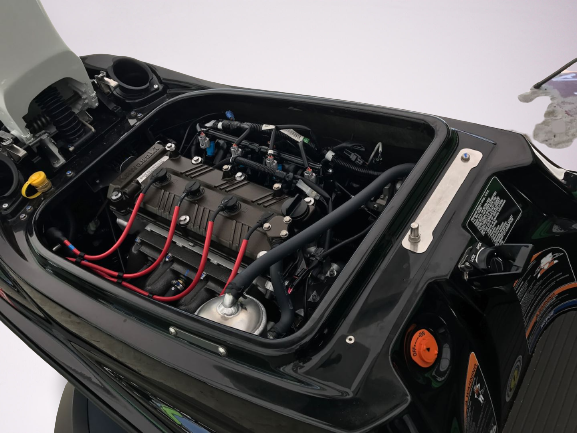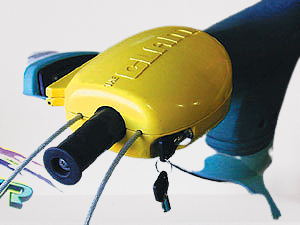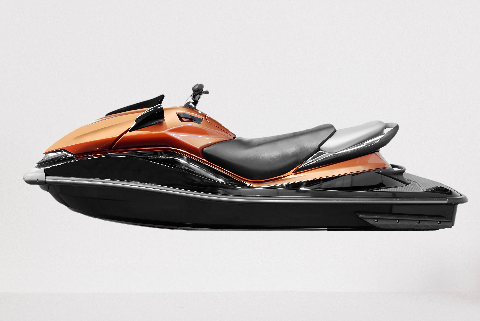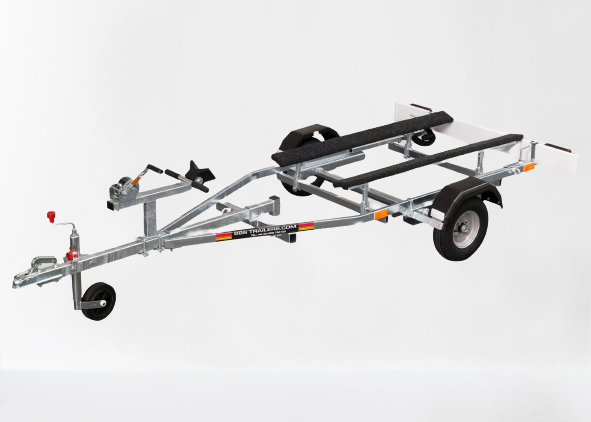Instead of spending a fortune on a brand-new jet ski, many people save money and buy a used jet ski. It is a fantastic option if you want to buy a jet ski but are on a tight budget. But there are many factors to consider before buying a used jet ski to save time and money.
If you want to buy a used jet ski, this article is for you. It will explain some of the most critical factors to consider before buying a used jet ski.
There are always risks when buying used, and a Jet Ski is no exception; But, with a bit of diligence, you should be able to locate the ideal used model. How can you find the best-used jet ski while avoiding the most common mistakes? This article will focus on the factors to consider before buying a used jet ski.
10 Factors to consider before buying a used Jet Ski
You want to learn as much as possible to choose a jet ski that will serve your needs for many years to come to save time and money.
- Know the Legal Limits of Jet Ski in your area
- Selecting the Jet Ski category
- Engines of Jet Ski Model
- Check for Security
- Check For Damages
- Know how much-used jet skis cost
- Do a water test
- Know what’s considered high hours on a jet ski
- Check For Trailer
- Factor in hidden cost
1. Know the Legal Limits of Jet Ski in Your Area
You probably have a specific location in mind for your new jet ski. There is always one particular body of water where you will utilize it the most, no matter how much you intend to move.
Maybe you didn’t know this, but there are restrictions on the horsepower of jet ski engines in that region.
These rules might be in place to protect the environment, keep you and other swimmers safe, address concerns about space, etc.
It means you should check into
- what kind of motor the jet ski you’re considering has.
- What kind of motors are allowed on the water do you want to use?
You will only want to spend thousands of dollars on things you can utilize in your area, so keep this in mind while you shop.
2. Selecting the Jet Ski category
Sit-down and stand-up jet skis are the two significant types. Size differences exist between the two groups. These types are larger and more comfortable to sit on, making them simple. Most of the newer versions are intended to be “family jet skis,” on which you and your loved ones may ride together.
Depending on your needs and preferences in size and model, you can choose from the five types of sit-down jet skis.
- Rec-Lite
- Recreation
- Luxury/Performance
- Tow Sports
- PWC Fishing
It would help if you thought about upgrading to personal stand-up watercraft (PWC) when you have mastered riding a jet ski and have developed some athletic strength. They’re enjoyable to ride and smaller.
3. The engine of the Jet Ski Model
Checking the engine model is the most crucial factor to consider before buying a used jet ski. Let’s compare second-hand jet skis based on their engines and horsepower levels.
Sit-down jet skis/4-Strokes Engine Model
If you’re set on sit-down jet skis, we advise using a 4-stroke engine. And here’s why.
The 2-strokes, sit-down jet skis are so 1990s. Despite their lower price tags, antique vehicles have higher operating expenses than modern alternatives.
The old 2-stroke models consume a lot of gasoline, driving up your costs. In addition, they have a high oil price.
Those worn-out, seated designs need to be replaced. Their engines produce more pollution than those of modern vehicles. As a result, you’ll increase your oil and gas use and contribute to an environmental threat.
Most stores need the components necessary to repair two-stroke engines. There is no local supplier. Furthermore, repair facilities are hesitant to service vessels older than ten years. Because of this, there will be less upkeep and a greater possibility of malfunctions, mishaps, or even explosions!
Because of these drawbacks, we advise sticking to 4-stroke sit-down jet ski models when shopping for a second-hand jet ski.
Stand-up jet skis/ 2- stroke Engines
Unique among jet skis, you can purchase stand-up models with conventional 2-stroke engines.
Manufacturers go to such lengths to ensure a quicker, more responsive jet ski by maximizing the power-to-weight ratio. Due to the lighter nature of these jet skis, using a 2-stroke engine makes perfect sense. Most modern stand-up versions, as well as all antique ones, are powered by two-stroke engines.
However, as of 2015, 4-stroke stand-up jet skis have also entered the market, which is excellent. It is the official Kawasaki SX-R 1500.
4. Check for Security
Security is one of the most important factors to consider before buying a used jet ski. Nobody wants to admit it, but jet skis are a significant target for thieves. If you’re in the market for a used one, security features, such as the availability of anti-theft gadgets, should be high on your list of priorities.
Locking and securing a jet ski varies by brand and type. Some may have security tags and lanyards, others may be pin or fob protected, and a few older versions may even have an immobilizer.
Inquire into any theft or attempted theft incidents and whatever precautions the seller has taken to protect the jet ski.
5. Check for any Damage
Make sure that before buying a used jet ski, it’s been thoroughly inspected for any damages. There are quite a few potential damages to look out for, but some are more important than others.
Hull Damage
Damage to a used jet ski hull is one of the most noticeable problems with these vehicles. Only buy a used jet ski (PWC) if it has dings bigger than a quarter.
There should be some minor wear and tear to be expected, given its previous use. What’s important is that they’re predominantly on the sides rather than on the bottom. Most side damage is caused by docking. Thus, it’s best to avoid it. The world is not perfect, so don’t worry if you have a few flaws. They probably very lightly brushed up against the dock and didn’t do any real damage. However, the bottoms with marks are a different story. Seeing any broken fiberglass here would raise red flags.
Seat Damage
It may not seem like it, but something as basic as a jet ski seat may be an excellent sign of how it was treated. Dry rot or significant seat cracking indicates that the boat was not covered during storage.
Naturally, some wear and tear are expected if it is ancient, but it should be minimal.
The weight of the seat is another notable feature. The presence of water makes it difficult to lift. Thus, this is a good indicator. Seats on jet skis that contain water have likely been submerged at some point. Although this may not seem significant at first, it can lead to serious engine issues in the future.
Rust & Corrosion
There should be no rust or corrosion surrounding the engine or pump, so if you’re looking for used jet skis, you should look elsewhere. It might not seem harmful at first, but it might cause problems in the future.
Rust and corrosion are almost always accompanied by significant paint flaking around the engine. Even novice riders should be able to notice it without difficulty.
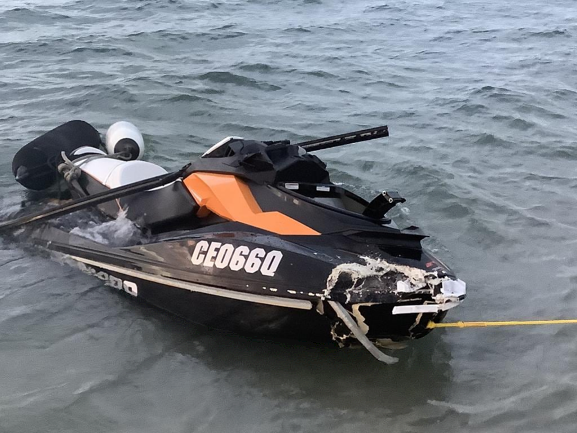
6. Know how much a used jet ski costs?
Everyone wins if the buyer and seller know the model’s actual market value. In the absence of this, any party might end up being exploited. The price of used jet skis is easy to find, so there’s no excuse not to shop around.
You can find the most up-to-date jet ski pricing with little effort. Thanks to resources like Kelly Blue Book, it’s easy to find out how much a used jet ski is worth. They now have a whole department devoted to jet skis.
It would help if you still examined the local markets, even though reputable sources can provide up-to-date predictions. Try to locate comparable models in local catalogs. Online estimates can be relatively precise sometimes, but they aren’t guaranteed to be 100% correct.
Serious purchasers should consider testing the jet ski at the dealer, which is a terrific idea. They usually provide a reasonably accurate appraisal of second-hand jet skis. Some retailers will even test your boat to make sure it is seaworthy. However, remember that they are dealers, so their perspectives may be skewed.
7. Do a Water Test
One of the worst things you can do when shopping for a jet ski, old or new, is not to put it through a water test. A jet ski may function on a trailer, but how does it perform when immersed in water?
Never buy a used Jet Ski without first water-testing it. Even if the vendor assures you the watercraft is in good shape, nothing beats putting it through a water test yourself. Ensure the boat takes off immediately during water testing. In most cases, the power of the Jet Ski is irrelevant, as they all launch with the same ferocity. Always check for warning lights and working gauges. Performance-wise, you want above 7000 RPMs at full power, although this varies by ski.
8. Know what’s considered high hours on a jet ski
The number of hours on a PWC is a good indicator of its utilization.
Jet skis should average 30 hours per year. High hours are defined as more than 30 in a given year, while low hours are defined as less than 30.
Although you should count the hours, not all hours are equal. Poorly maintained jet skis can break after 100 hours, whereas well-kept ones can last 300.
A PWC with high hours can still run well, provided it’s maintained annually and winterized. All that matters is how much care its previous owners took of it.
There are a few things to look out for when it comes to analyzing how many hours is a lot on a used jet ski:
Maintenance Receipts
One of the most significant ways to know if old jet skis have been adequately maintained is if the owner still has maintenance invoices. They were probably a good owner if they still had an oil filter, spark plug, and other part receipts.
Great owners may not do this, but it’s a good indicator if they do.
Who did the maintenance?
Who built the boat is something many people overlook. Does the dealer conduct all maintenance? Do you know? These are essential questions.
Owners can do simple repairs and tune-ups. Major fixes may be a red indicator.
Which parts have been replaced?
Some replacements are OK, but faulty components are a problem. Someone should have taken care of their jet ski if it needed a new hull after running aground.
How to check the jet ski hours
There should also be an hour meter on the dashboard if there is a speedometer. All new automobiles should have this feature. The information may need to be more evident and require a few menus, but it should be there.
9. Check for Trailer
Remember the trailer along with the jet ski. You can’t take your jet ski anywhere on land if you don’t have a trailer, so be sure it’s in good condition before you buy it.
- Here are the primary trailer considerations:
- Observe the frame for any rust or corrosion.
- Assemble the jet ski and see if the parts fit correctly.
- Verify the functionality of the backlights.
- Make sure the straps and jockey wheel are strong.
- Check the tire pressure and tread depth.
Jet ski trailers have an average lifespan of 8–10 years, give, or take, depending on the brand and how well you care for them. Considering this, you should inquire as to its age from the vendor.
10. Factors in Hidden Costs
To avoid overspending, prospective buyers of used jet skis should determine the maximum amount they are willing to pay. Without a fixed price, it’s far simpler to waste money.
Remember that there are always additional expenses when buying a watercraft, especially a used jet ski. Leave some flexibility in the budget every year for surprises.
Among the most common unseen expenses associated with jet skis are:
Jet Ski Insurance
The cost of jet ski insurance might take much work to predict. It usually varies by manufacturer, model, engine type, and rider background. For most people, the annual premium for jet ski insurance will be between $100 and $500. If they buy used jet skis, they’ll probably be on the cheap side of things.
Jet Ski Trailer
Many first-time customers need to factor in the price of a jet ski trailer. Some individuals may be shocked to learn that their fees range from several hundred to several thousand dollars. A good jet ski trailer can cost a maximum of a few hundred dollars, but there are many alternatives for those who want to spend.
Maintenance
It’s important to remember that used jet skis require regular maintenance, which may substantially add to the overall price tag. There is no way to offer a rough estimate because the quantity varies. The owner should have a budget for Oil changes and winterization charges.
Jet Ski Accessories
Accessories are the lowest portion of used jet skis’ hidden expenses. Many useful add-ons for jet skis exist, but for the most part, you can get by with only the basics. It’s a good idea to stock up on a few essentials. Essential gear is a boat’s anchor, a jet ski cover, and life vests.
Final Thoughts
A jet ski can be a good investment if you enjoy water sports and have the funds available. There are now over a million jet skis registered in the United States, so getting one yourself is a good idea. You can even hire one occasionally if you’re strapped for cash.
Your first step in purchasing a jet ski should be determining your needs. Find out about the many options and pick the one that works best for you! Remember to budget for the water test and other costs that come with owning a home.
You can buy a used jet ski if your expectations are reasonable. Always remember that the risk is more significant with a used jet ski. To avoid these risks, you should research and know the factors to consider before buying a used jet.
The compression test is the most critical factor to consider before buying a used jet ski. This test can determine the condition of the jet ski’s engine valves, valve seats, and piston rings, as well as the need for any necessary repairs.

